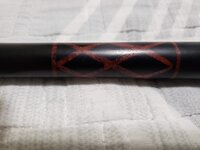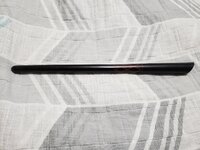RunnerVince
Member
I'm doing a project with some ebony where I've carved in a diamond pattern into the ebony, and my initial plan was to fill the carved areas with bloodwood sawdust and CA glue. This has thus far proved unsuccessful. The glue doesn't seem to want to adhere to the ebony. I'm planning on spending some more time trying a few different approached, but I wondered if you fine folks might have any ideas on how to proceed.
I think any solution is going to require undercutting the carving first, so I'm going to start with that, and maybe taking a scrap of the bloodwood to my sander to get some finer sawdust. If that doesn't work, I'm out of ideas.
Thanks everyone.
I think any solution is going to require undercutting the carving first, so I'm going to start with that, and maybe taking a scrap of the bloodwood to my sander to get some finer sawdust. If that doesn't work, I'm out of ideas.
Thanks everyone.



